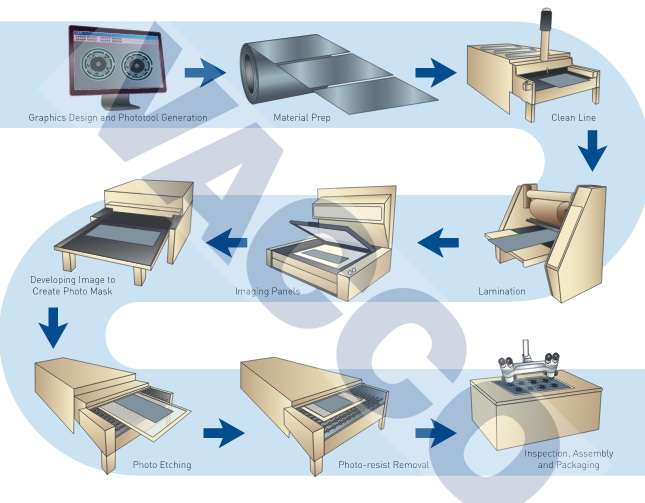Photo etching is a quick and economical machining process that can yield complex parts. It is also known as photochemical milling, photochemical machining or simply photo etching. Photo etching involves less cost than water jet cutting, stamping or wire electrical discharge machining for thin gauge precision parts. In fact, as the geometric characteristics of a part becomes more complex, photo etching generates even greater cost efficiencies relative to other machining processes.
Metals or alloys of any hardness that have a thickness in the range of 0.0005 to 0.08 in can be used for photo etching. Some commonly used materials are:
Inconel
Copper
Steel
Stainless steel
Titanium
Aluminum
Brass
Zinc
Parts made from photo etching are burr-free because there are no mechanical or thermal stresses involved. Manufacturers of scientific instruments such as seismographic devices and spectrometers rely on photo etched parts. Photo etching can be used to make a wide range of products such as:
EMI/RFI shields
Gaskets and seals
Meshes
Heat sinks
Electrical contacts
Microwave circuits
Battery grids






